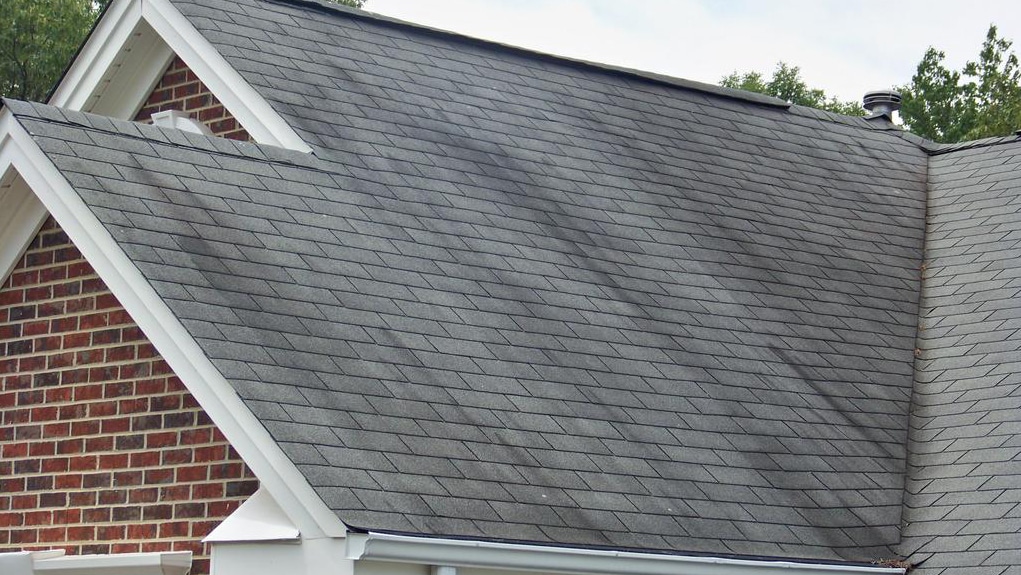Question: My roof is only ten years old and recently we’ve noticed black stains appearing on the shingles. What are these stains and what can I do to remove them?
Answer: Although these streaks may appear to be soot, dirt or mold, these stains are actually caused by algae, Gloeocapsa Magma, and are spread by airborne spores. Areas of the country with higher humidity are more susceptible to this algae growth. You will most likely notice an appearance of streaks that taper down from the ridge of your roof, but are absent below metal flashing. The stains are absent below the flashing because the copper and zinc coating on galvanized metal prohibits the growth of algae.

How does algae grow?
Algae require moisture and proper temperature to grow. Morning dew (water) is a primary moisture source. Algae generally grow on the northern exposure of a roof since this exposure receives less sunlight. In addition, unfortunately algae adapts to extreme weather conditions. A moisture condensing surface combined with organic component (filler material such as limestone used in shingles) makes for a great growing surface for algae.
Is algae bad for my roof?
Unfortunately, yes. Over time, algae will break down shingles by feeding off the limestone granules embedded in the shingles. As the algae continue to grow, the roof’s ability to reflect the sun’s ultraviolet rays will lessen and the roof’s weather-proofing properties will be diminished. The algae will also continue to multiply and the stains will get worse.
What solutions do I have?
Clean it off. There are a variety of cleaning products on the market that will remove algae to varying degrees. There is no guarantee that the algae won’t return, however, and in many cases it does. Try to clean the algae sparingly as the repeated use of chemicals can shorten the life of an asphalt roof. In addition, avoid the use of a power washer which can dislodge shingle granules and cause premature shingle failure. Finally, mind the surrounding plant life that cleaning may affect.
Install a strip of copper on your roof. Copper is toxic to algae. Installing a 2-4” strip just below the ridge at the top of your roof allows trace amounts to wash down, preventing algae growth. Copper can be expensive and so many people opt for galvanized metal as a cheaper alternative. Roofing nails can attach the copper or galvanized metal to the roof, but care must be taken not to compromise the shingle’s integrity. Also be mindful not to void any roofing warranty that you may have.
Replace your roof. If your roof is nearing the end of its life, it’s probably best to consider replacing it with a new roof that utilizes algae-resistant shingles. Small amounts of copper and other weather-proofing properties embed these shingles to prevent algae growth.
If you have any questions about the black spots or streaks on your roof, contact us! We would be happy to come and provide a free roof inspection. For more information on our roofing services please call us today at 888-812-2783.


